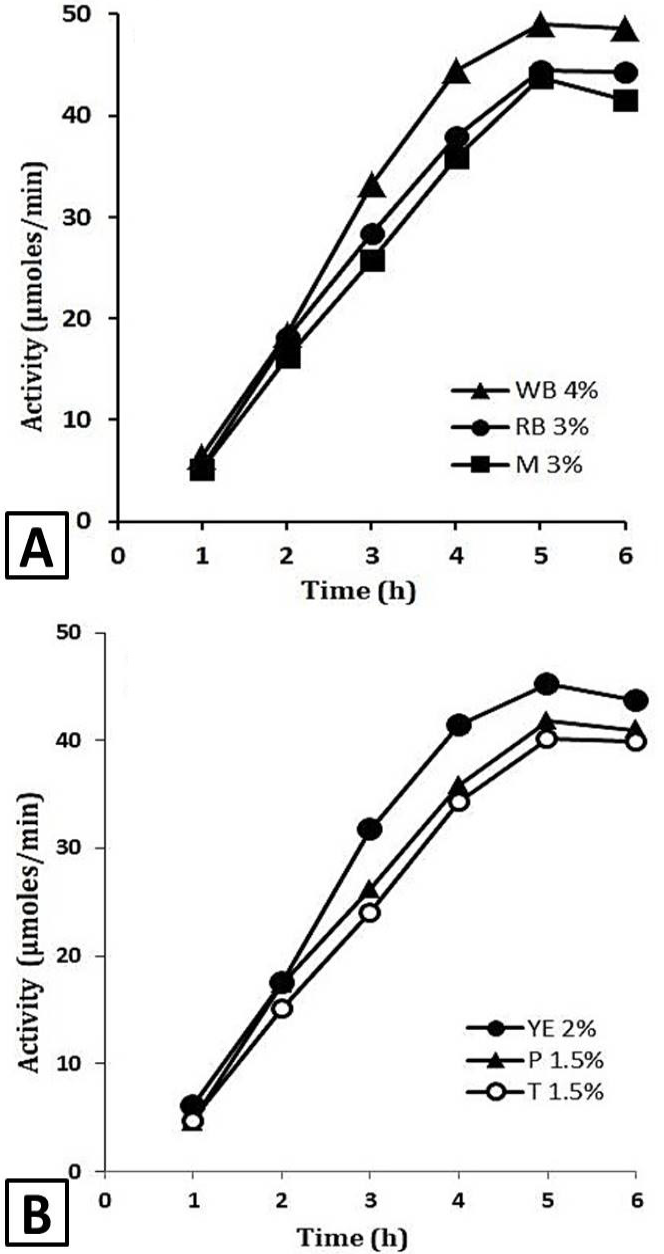Production and Utilization of Locally Characterized Recombinant β-Lactamase as Positive Control in the Antibiotic Susceptibility Testing
Production and Utilization of Locally Characterized Recombinant β-Lactamase as Positive Control in the Antibiotic Susceptibility Testing
Amjed Ali1, Muhammad Tayyab1,*, Sehrish Firyal1, Abu Saeed Hashmi2, Asif Nadeem3, Shagufta Saeed1, Ali Raza Awan1 and Muhammad Wasim1
Comparative analysis of impact of carbon and nitrogen sources for the production of β-Lactamase. A, comparative analysis of carbon sources on the production of β-Lactamase. Molasses, rice bran and wheat bran were used as carbon sources for the supplementation of LB medium and for the enhanced production of β-Lactamase. B, comparative analysis of nitrogen sources on the production of β-Lactamase. Tryptone, peptone and yeast extract were used as nitrogen sources for the supplementation of LB medium and for the enhanced production of β-Lactamase. X-axis shows the time of incubation (h) while Y-axis shows the β-lactamase activity in µmoles/min.
Comparative analysis of impact of carbon and nitrogen sources for the production of β-Lactamase. A, comparative analysis of carbon sources on the production of β-Lactamase. Molasses, rice bran and wheat bran were used as carbon sources for the supplementation of LB medium and for the enhanced production of β-Lactamase. B, comparative analysis of nitrogen sources on the production of β-Lactamase. Tryptone, peptone and yeast extract were used as nitrogen sources for the supplementation of LB medium and for the enhanced production of β-Lactamase. X-axis shows the time of incubation (h) while Y-axis shows the β-lactamase activity in µmoles/min.











